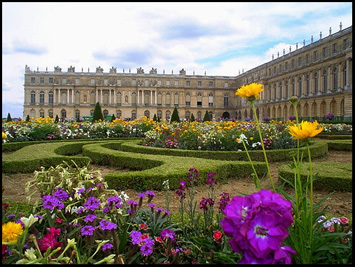 Gold, gold, and more gold! Marvelous paintings on every ceiling! Stunning gardens! Welcome to the Palace of Versailles.
Gold, gold, and more gold! Marvelous paintings on every ceiling! Stunning gardens! Welcome to the Palace of Versailles.
If you’ve seen the movie, Marie Antoinette, you know about the Palace of Versailles. If not, you probably recall hearing about Versailles in history class. The treaty that ended World War I was signed here.
Back in the day, the palace of Versailles was France’s ultimate royal palace. It is still just as impressive. There is gold everywhere – or gilded bronze, if you want to get technical – but it accents everything in the palace. The fireplaces are so large, you could stand in them, and the ceilings are amazing. The Palace of Versailles is definitely a must see for anyone traveling to France.
JUMP TO: When to Go Cost History What to See
Whenever there’s a fountain show! They play from the end of April through September, from 11:00 am to 12:00 pm and 3:30 pm to 5:00 pm.
Obviously, it is busiest during tourist season. Going out of tourist season is fine, but you will miss out on some things, like the fountain shows and the true grandeur of the gardens. The busiest days at Versailles are Tuesdays, Sundays, and holiday weekends.
The monument is closed on Mondays.
Pace yourself! Don’t expect to see everything in one visit unless you plan on running through the place, and what fun is that? For a less hectic day, limit yourself to the gardens and Grand Apartments, which include the King’s state apartment, the Queen’s state apartment, the Hall of Mirrors, and more.
The gardens are open daily from 8:00 am to 8:30 pm from April 1 to October 31 and from 8:00 am to 6:00 pm from November 1 through March 31 .
The Palace and Grand Apartments are open daily from 9:00 am to 5:30 pm. From April through October, they close at 6:30 pm.
Have more time? Check out the King’s private bedroom in the palace (by guided tour only), where he went to escape the formality of palace life. You can also go see the Estate of Marie Antoinette, including the Grand Trianon, Petite Trianon, and Hamlet – a 25 minute stroll away, or you can take the mini-train.
The Grand Trianon and Petit Trianon are open daily from 12:00 pm to 5:30 pm. From April through October, they close at 6:30 pm.
If you buy a passport at the train station in Paris, you can save time and money. It covers train travel to Versailles, and entrance to everything the palace has to offer.
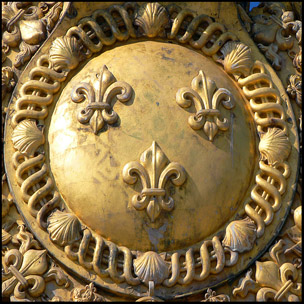
There are many ticket options, so really think about what you need and choose wisely.
High season is April 1 to October 31.
Low season is November 1 to March 30.
Palace (one-time visit)
Adults: €15
One-day Pass
Adults: €18
Estate of Marie-Antoinette
Adults: €10
Gardens are free, except for fountain show days.
Ages under 18 are free. Entrance is free on the first Sunday of the month from November to the end of March. Reduced admission rates are available after 4pm for €6 from April 16 through June 30.
Back to top
History of the Palace of Versailles
- Versailles began as Louis XIII’s hunting lodge. Within 50 years, it had transformed into an extravagant palace.
- The transformation of Versailles began in 1661, with approximately 40,000 workers draining marshes and moving forests. Louis XIV had set out to build a palace that would be the envy of Europe. Wishing to keep an eye on the nobles, Louis XIV had them live with him at Versailles. He amused them with constant entertainment and lavish banquets – some were even awarded the task of holding the hem of his robe. Woo hoo!
- Under Louis XIV, Versailles became the center of political power. More like a town than a palace, it was the seat of French power for more than 100 years. It kept members of the royal family safely cushioned from their subjects in Paris (until the bloodthirsty revolutionary mob cam a-knocking!)
- Louis XIV died in 1715, and his great grandson Louis XV succeeded him. Louis XV continued with his great grandfather’s outrageous pomp, though he is said to have predicted the outcome: “Après moi le deluge” (After me, the deluge). His wife, on the other hand, Marie Leszczynska, was shocked at the blatant immortality at Versailles, including her husband’s promiscuous behavior.
- France’s next monarch, Louis XVI, found his grandfather’s behavior scandalous. In fact, upon gaining the throne, he immediately ordered that the “stairway of indiscretion” (secret stairs leading to king’s bedchamber) be removed.
- Louis XVI and his child bride, Marie Antoinette, were a well intentioned but weak pair on the throne. At first, they were well liked, but eventually the queen’s frivolity and spending led to their downfall. Louis and Marie Antoinette were at Versailles on October 6, 1789 when a revolutionary mob seized them, and forced them back to Paris. As predicted, the deluge had arrived.
- During the Revolution, Versailles was ransacked, with much of its furniture and other objects destroyed.
- Napoléon stayed at Versailles, but never seemed fond of it. Louis-Philipe, who reigned from 1830-1948, prevented the destruction of the palace by converting it into museum dedicated to glory of France. To do that, he had to surrender some of his own riches. Decades later, John D. Rockefeller contributed toward the restoration of Versailles and work on the palace continues to this day.
Back to top
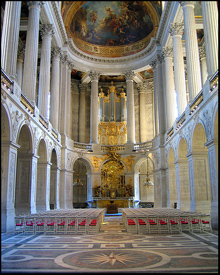
- The ceilings
- The Grand Apartments
- (The Hall of Mirrors, the King’s and Queen’s state apartments, the Royal Chapel, the library, the clock room, the salons, and the Opera)
- The gardens
- The fountains
- The Grand Trianon
- The Petit Trianon and the estate of Marie Antoinette
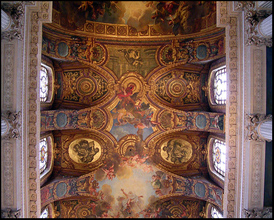
Each room in the palace has an amazing painting on its ceiling– enough said!
The Grand Apartments are on the first floor of palace and consist of the most popular rooms.
- The salons are magnificent. They are in the Louis XIV style, and each room is dedicated to an Olympian deity. The best known and largest is the Hercules Salon, its ceiling painted by Francois Lemoine, depicting the Apotheosis of Hercules.
- In the Mercury Salon, the body of Louis XIV was put on display in 1715 as a tribute – his 72 year reign was the longest in history. The ceiling was painted by Jean-Baptiste Champaigne.
- A marble statue of Louis XIV stands in the middle of the room in the Salon de Venus. In the Salon de la Guerre, the room’s theme of war is reinforced by Antoine Coysevox’s stuccoed relief of Louis XIV riding to victory.
- The Salon d’Apollon was designed by Le Brun and is dedicated to god Apollo. This salon was Louis XIV’s throne room, and a copy of Hyacinthe Rigaud’s famous portrait of the king hangs here.
- The King’s state apartment is a lavish shrine to the power and grandeur of Louis XIV. The ceilings are painted with scenes of thunderous gods and the walls are richly clad with marble and gilded bronze.
- The Queen’s State Apartment runs parallel to the King’s state apartment, with the Hall of Mirrors forming a lavish corridor between the two. In the Queen’s bedchamber, she was dressed daily by aids in front of the public!She also suffered through the ordeal of giving birth to royal children in public view, to prove the royal heirs were real. Crazy! Marie Antoinette was the last queen to occupy this room, and the portraits of her family decorate the walls.
- The Hall of Mirrors is the most famous room at Versailles. As you enter it, you’re bathed in a sea of chandeliers, natural light, and opulence.It was designed by Jules Hardouin-Mansart in 1678 in the Louis XIV style, and was decorated by Le Brun with 17 great mirrors, made up of smaller, beveled mirrors, facing tall arched windows. The Hall of Mirrors was completed in 16886, and is approximately 240 ft (73) m long.
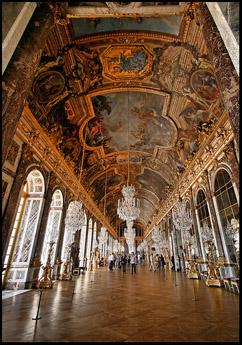
- The Hall of Mirrors has served as a venue for royal wedding celebrations, a place for greeting foreign dignitaries, and even a corridor. On June 28, 1919, the treaty ending World War I was signed right here in this room.
- More than 350 mirrors catch the light pouring in and the huge arched windows give a spectacular view of the gardens and canals. The omnipresent Louis XIV is, of course, epicted in the ceiling paintings, showing episodes from the king’s reign.
- Louis XVI had a luxurious library, designed by Jacques-Ange Gabriel. The neo-classical panels are delicately carved and the room has been restored and refinished. Check out the King’s terrestrial globe.
- The Clock Room contains Passement’s astronomical clock, encased in gilded bronze. It took twenty years to make, and was finished in 1752. The clock is supposed to keep time until the year 9999! At age 7, Mozart played for the court in this room.
- The Opera was designed by Gabriel for Louis XV in 1748, but it wasn’t completed until 1770. In its heyday it took 3000 candles to light the place. Don’t take pictures in here – you’ll be yelled at!
- Hardouin-Mansart built the harmoniously gold and white Royal Chapel in 1669, dying before its completion. Louis XVI married Marie Antoinette here in 1770, while he was the dauphin. I think this chapel is breathtaking!
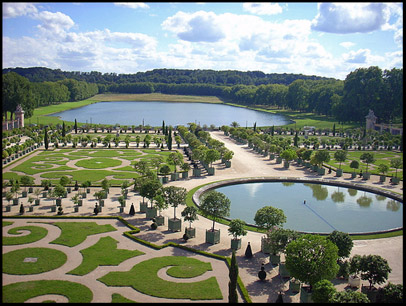
Versailles has the largest palace grounds in Europe. Its gardens are spread across 250 acres, and were laid out by landscape artist Andre Le Notre. Le Notre created a Garden of Eden using ornamental lakes and canals, geometrically designed flower beds, and avenues bordered with statuary.
Louis XV used to take gondola rides on the Grand Canal with his favorite female of the moment. Today, you can rent rowing boats – home you’re in shape, the canal is 1 mi (1.6) km long!
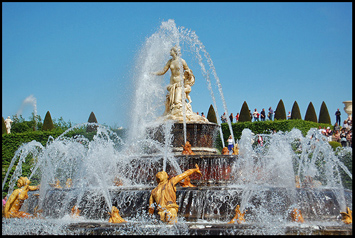
Photo by Edwin Lee
At the peak of Versailles’ glory, 1400 fountains spewed forth. It is a pity that on most days these famous fountains remain still.
The Apollo fountain guards the entrance to the Grand Canal. It shows the sun god rising out of the water on a chariot, symbolizing the rise of the Sun King’s reign. The Latona fountain depicts Apollo’s mother asking Jupiter to turn the Lycian peasants into frogs.
Don’t miss Neptune fountain, with groups of sculptures spraying spectacular jets of water. Try to catch the fountain show – it’s a must see!
Across the park is the pink and white Grand Trianon. It was designed by Hardouin-Mansart for Louis XIV in 1687. The king used it to escape the duties of court life, as well as to enjoy the company of his mistress Madame de Maintenon.
Traditionally it has been lodging for VIPs, though de Gaulle wanted to turn it into a weekend retreat. Nixon slept here, in the room where Madame de Pompadour died. The original furnishings are gone and have been replaced today by mostly Empire pieces.
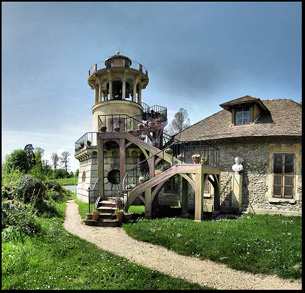
Photo by Etienne Cazin
The Petite Trianon and Estate of Marie Antoinette were designed by Gabriel (who also designed Place de la Concorde in Paris). They were built in 1768 for Louis XV who used it for trysts with Madame de Barry.
In time, Marie Antoinette adopted it as her favorite residence, a place to escape the rigid life at the main palace. Many of the current furnishings, including a few in her rather modest bedchamber, belonged to the ill-fated queen.
The Estate of Marie-Antoinette also consists of a chapel, French Pavillon, the Queen’s Theatre, the Temple of Love, a Grotto, a Landscaped Garden, Refreshment Dairy, the Queen’s Hamlet, and a farm.